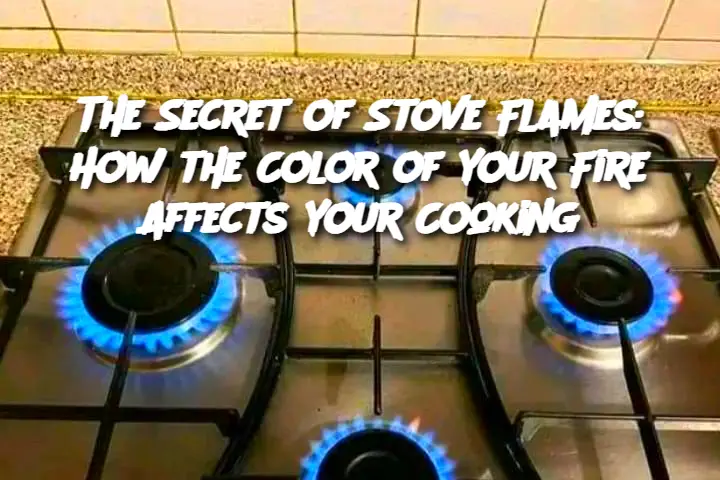ADVERTISEMENT
Using Different Cooking Techniques:
Depending on your cooking method, the flame color you use can vary. For example, when baking or roasting, it’s not the flame color that matters but the oven’s temperature. However, for stovetop tasks like frying, boiling, and sautéing, the color and intensity of the flame can make a noticeable difference in your dish's final texture and flavor.
For Gas vs. Electric Stoves:
While gas stoves have more noticeable flame color variations, electric stoves rely on heat from coils. If you have an electric stove, flame color isn't a factor, but the heat intensity of your burners still impacts cooking efficiency.
Frequently Asked Questions
1. Why does my gas flame turn yellow?
A yellow or orange flame on your gas stove is usually a sign of incomplete combustion. This could be caused by a dirty burner, improper gas flow, or low oxygen levels. Cleaning the burner and adjusting the air supply can often resolve this issue and restore a blue flame.
2. How can I fix a yellow flame on my stove?
To fix a yellow flame, try cleaning the burner to remove any debris or residue. Ensure that the air supply is correctly adjusted, and check if the gas flow is at the right pressure. If the issue persists, it might be time to have your stove inspected by a professional.
3. Can a blue flame be too hot for cooking?
A blue flame provides high heat, but it’s the ideal temperature for tasks like frying, sautéing, or searing. If you need to cook something more gently, such as simmering a sauce, you can reduce the flame intensity by lowering the gas flow.
4. What should I do if I have an electric stove?
On an electric stove, the color of the flame doesn’t apply, but the temperature of your coils or burners is still crucial. Make sure your pans are compatible with your stove’s heat settings, and use appropriate cookware for the best cooking results.
5. Does the flame color affect the flavor of my food?
Yes, the flame color can impact the flavor of your food. A yellow or orange flame can result in uneven cooking and may create off-flavors, especially if there’s soot buildup. A blue flame, on the other hand, provides even heat, resulting in better-flavored and perfectly cooked dishes.
Understanding the color of your stove flames and how they impact your cooking is an essential step in becoming a more skilled and conscious cook. By adjusting the flame color and making sure your stove is operating at its best, you can improve the quality of your meals and enjoy the art of cooking even more!
ADVERTISEMENT
